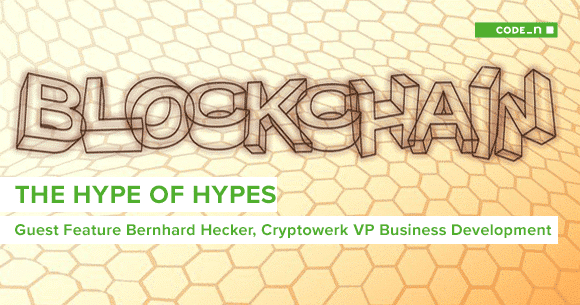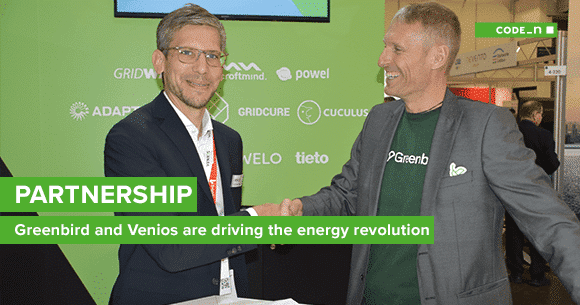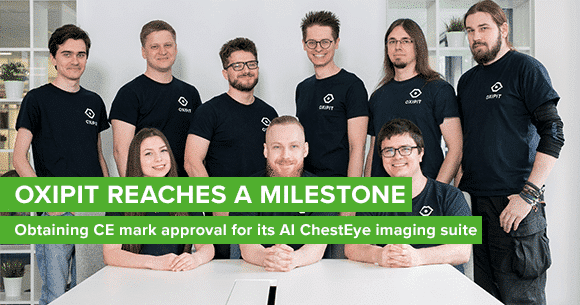Finalist | Has.to.be (Austria) - modern charging infrastructures
 has.to.be is a cloud-based service provider from Austria with two applications: (1) be.ENERGISED, which enables anybody to operate a modern charging infrastructure for electric vehicles. The application controls stations, plans service operations and enables the billing of charging processes. (2) be.ORGANISED, which is a complete CRM and project management suite for small companies, including contact, project and document management, invoicing and billing. We talked to Martin Klässner, managing partner of our CODE_n finalist.
has.to.be is a cloud-based service provider from Austria with two applications: (1) be.ENERGISED, which enables anybody to operate a modern charging infrastructure for electric vehicles. The application controls stations, plans service operations and enables the billing of charging processes. (2) be.ORGANISED, which is a complete CRM and project management suite for small companies, including contact, project and document management, invoicing and billing. We talked to Martin Klässner, managing partner of our CODE_n finalist.
More information: CODE_n CONNECT | Website | Facebook
Where did your idea for the company come from?
Martin Klässner (has.to.be): Both founders have been working in several similar sectors in recent years. I was responsible for the service management of the charging infrastructure of a charging station manufacturer and figured out the need for a centralized, easy-to-use service management system for connected charging stations. Further developments also resulted in billing capabilities and a lot of additional functions, so that we now own a cloud-based software application that nearly fits all the needs of charge point operators.
For which kind of audience is your product or service intended and what problem is it solving?
Martin Klässner (has.to.be): Our software is focused on the B2B sector. Our software services allows us to provide a turnkey solution, not only for charge point operators but also for companies that provide their own charging infrastructure, e.g., for their employees. Our software enables anybody to operate their own charging infrastructure – we answer all their technical requirements, except the charging station itself. With our services, we solve the “operation problem“ for our customers. Our software focuses on the technical operating process. Furthermore, it has extensions with customer relationship features. In the future, we plan to integrate smart grid functionality and we’re currently in production/development with a turnkey solution, also for targeted at utility companies, for later this year.
Tell us a bit about the company’s founders like their professional or industry background and the origins of the founding idea.
Martin Klässner (has.to.be):
I would call myself a digital native. Back at school I already worked al lot with Internet technologies and I developed my own software and founded my first company in 2001. This was followed by a few more things: For example I was the founder and creative director for Technagon and Veniox. I’m interested in pragmatic, efficient solutions, which led me to develop pioneering solutions. Quite early on I was involved in digital signage, touchscreens, interactive kiosk systems and this led to more work with charging stations and e-mobility concepts, which was my main focus for the last 6 years. With has.to.be, it is due to my experience and personal interests that I’m the expert on e-mobility within the enterprise.
Alexander Kirchgasser entered the digital world through the back door. For example, as a qualified retail salesman he tried his hand in the hospitality industry before training as a web developer during the first Internet boom. Here he not only found a job, but his calling. Before founding of his own company, he worked for ten years in various positions for enterprises in the new economy. His previous positions taught him how to work closely with other people, and this makes it easy for him to advise customers and provide support – even if it would otherwise be a difficult task.
People’s vision of the future is of stations for charging electric cars, but also as an entry point for cars to feed back into the electricity grid –so-called bidirectional charging. What is your opinion of these concepts and are they part of your business model?
Martin Klässner (has.to.be): Vehicle to grid (V2G) is a much-discussed area of the e-mobility sector. In our opinion, V2G could be an option to optimize local (home-based) energy supplies. But, to make concepts feasible and convenient, there is still a lot to do. If your car has just delivered energy to your household and then you need you car, you wouldn’t be very happy knowing you can only drive 25-40 km. So V2G needs several additional elements to deliver customer convenience, but this can be supported by mobile applications and other IoT technologies. We’re currently looking into developments in the V2G sector and are open to developments so that we can adapt – or rather extend – our application with V2G technology once the market picks up momentum.
See has.to.be live on the CODE_n Stage on Tuesday, 17.03.2015.






Comments